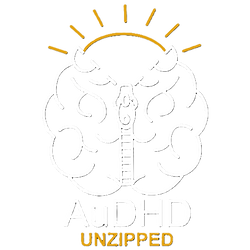

Case Study
Supporting a Young Person Through Change
COACHING CASE STUDY
Supporting a Young Person Through Change
The following is a case study from my work with a young person at a psychology therapy and diagnostic assessment clinic.
They have kindly agreed to share aspects of their coaching journey here, on the condition of anonymity.
Like many students who were studying for their GCSEs during lockdown, K was surprised to find themselves struggling.
Suddenly, all the usual foundations:
-
Structure
-
Institution
-
Routine
-
Predictability
-
Sense of control
-
Feeling of belonging
...were taken away.
On top of this, the pressure to choose a profession loomed even larger. As K approached the age of sixteen, the decision that once felt far off, now became immediate and urgent, intensified more sharply during the uncertainty of COVID.
Despite strong academic results, K was left feeling like a failure. Not because of performance, but because they felt they had been working towards a career path they hadn't truly chosen. It had been suggested by others, and so it never felt like their own.
And they still didn't know what they did want to do.
This pattern continued into further education, by which point things felt as though they had begun to unravel.
The approach we took for Coaching had to be gentle. A fixed weekly time slot wasn't realistic; sometimes K wasn't in the right mindset for Coaching. So we agreed on a more flexible, ad-hoc structure. This was carefully co-ordinated with the other professionals involved in K's support.
Coaching sessions only happened when:
-
K felt comfortable.
-
The timing felt right
First and foremost, we reinforced a vital message:
K did not need fixing. Nothing about them was broken.
In our first session, we explored character strengths, using a simple activity as a springboard for discussion.
This naturally led to a deeper conversation about traits often experienced by people with AuDHD (Autism + ADHD), including one that stood out:
Rejection Sensitive Dysphoria (RSD).
K was already familiar with the term, but had always interpreted it as simply, "feeling like a failure".
Together, we reframed this.
Yes, real rejection (as well as perceived) could be felt deeply - emotionally and physically. But we also recognised something important:
These feelings, whilst intense, did not last forever.
And what usually followed?
Bouncebackability.
We explored how this emotional recovery, in fact, showed a form of resilience. RSD, in this light, wasn't just pain. It also carried the potential for insight, recovery, and growth.
We then looked at how strengths, and the resilience that comes with RSD, require balance:
-
Overuse? Burnout.
-
Underuse? Disconnection, apathy.
Both can fuel the belief of failure, especially with burnout leading to withdrawal or exhaustion.
To build balance and prevent overuse, we identified two small SMART goals:
Specific, Measurable, Achievable, Realistic, Timebound.
Goal Example:
"To lock away devices in a drawer twice next week."
K had expressed difficulty switching off from others' needs. As a natural people-pleaser (a common ADHD trait), they felt unable to escape the constant flow of notifications and requests on devices. But turning off notifications entirely created anxiety about missing something important.
So, we created a compromise.
-
Chosen days: Tuesday and Friday.
-
Time: 1 p.m.
-
Action: Lock devices away on silent, shut down the computer.
-
Set a timer for 10 minutes.
-
Do something joyous: colouring, building Lego, journaling.
Originally, K had wanted to do this every day for an hour. We agreed that it may be too ambitious, which could create a cycle of pressure and potential disappointment. Smaller goals increased the chance of success and confidence (and reduced the risk of RSD paralysis).
And...
The goal was achieved.
As coaching continued, it was important to make sure our sessions didn't duplicate other support already in place. We stayed aligned with other professionals, so efforts could compliment, not compete with, each other.
Since then, K has been putting insights into practice in other parts of life. For example:
-
Sharing their understanding of RSD with others.
-
Setting boundaries around tasks that risk sensory overload.
-
Asking for help to break tasks down into manageable parts.
When things don't go to plan, K still feels the sting of RSD, but now pauses to explore. And question...
"Is this thought true?"
Sometimes it is, often, it isn't.
And even when it is, further exploration means they no longer suffer paralysis. K now seeks advice, reflecting on different approaches, or simply accepting that the difficulty wasn't their fault.
Sometimes, the best response from others is:
"That task is hard for me too. There's not always a fix."
Such reassurance provides comfort. It doesn't trigger a shame spiral. It allows K to keep moving forward: step by step.
K's positive journey continues.
With greater self awareness, resilience, and confidence in their own strengths, they're forging a path that feels far more aligned with who they truly are.